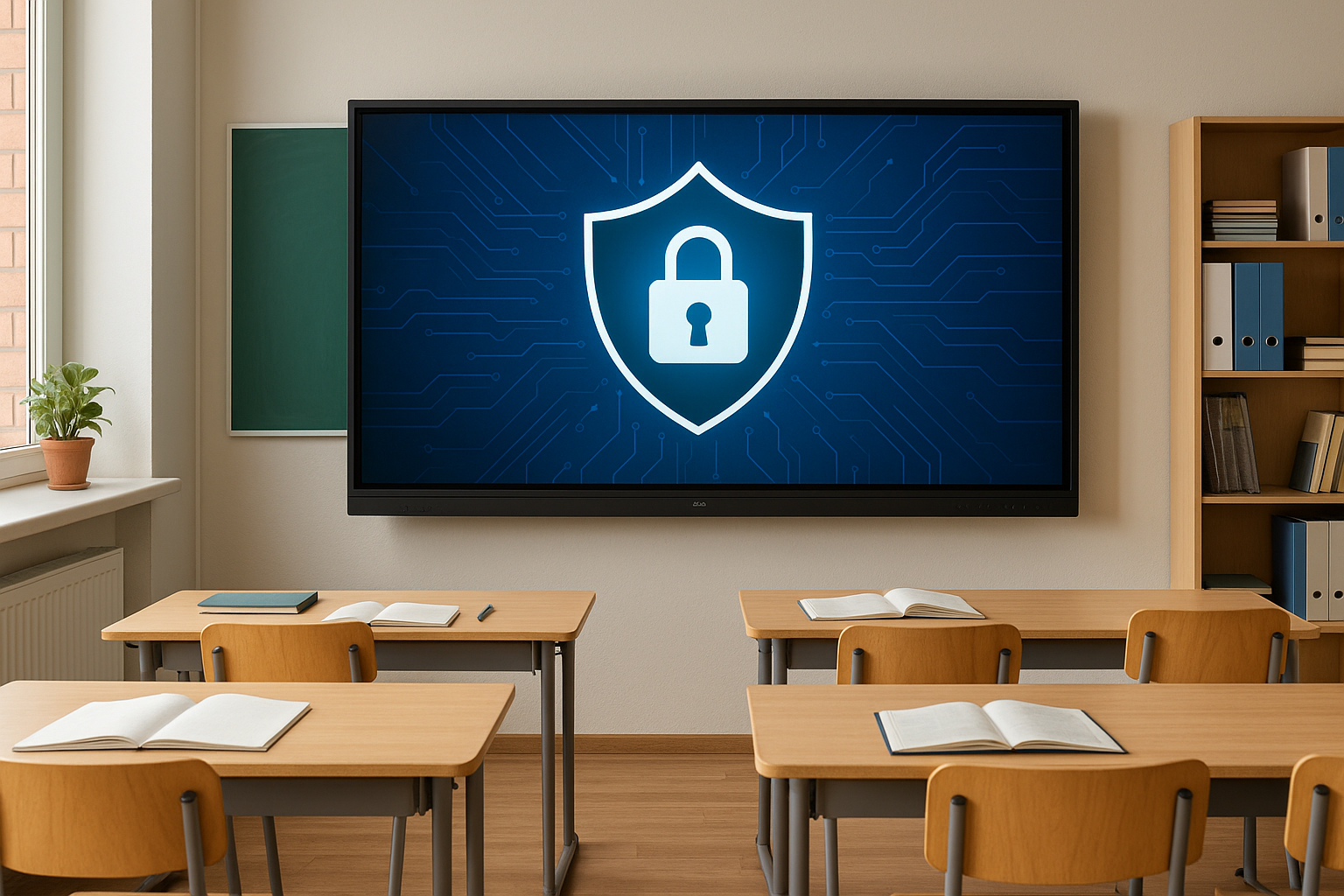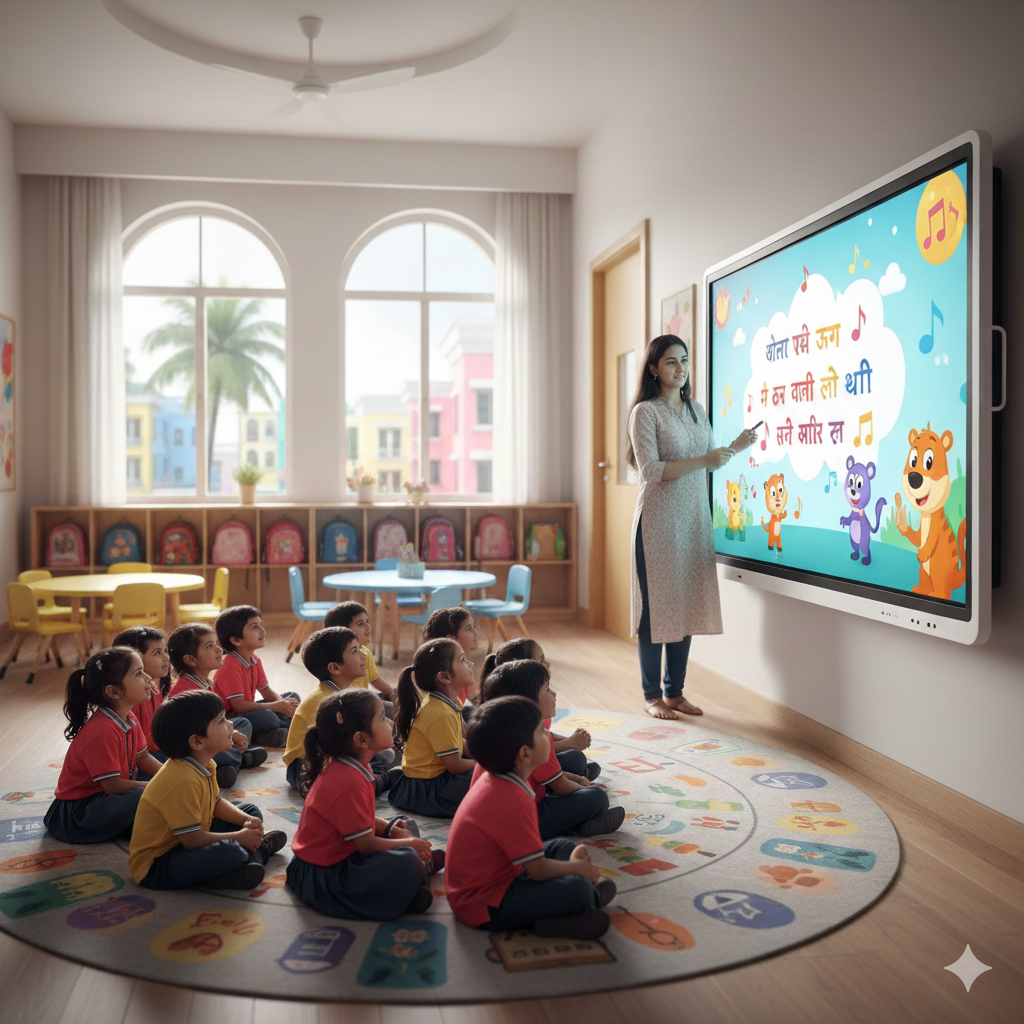8 School-Specific Security Tips to Protect Your Interactive Flat Panels

Walk into any well-funded modern school today and you’ll see a big, bright interactive flat panel in the middle of the classroom. Teachers love the touch screen, students love the videos and games, and parents are impressed. But here’s something noticed in dozens of schools: while everyone’s excited about what these displays can do, very few are thinking about what they shouldn’t do.
When your classroom tech is connected to the internet, you’ve got to assume someone, somewhere, might try to misuse it, whether that’s a curious student poking around, or an actual security threat from outside. This has been witnessed in rural and city schools. This isn’t just about “IT stuff”, it’s about protecting your school’s data, your teachers’ work, and even the smooth running of lessons.
Here are eight practical, school-specific ways to keep your interactive flat panels safe.
8 Security Tips to Safeguard Your Interactive Flat Panels in the Classroom

1. Use Strong Authentication and Access Controls
If everyone can change your settings, you don’t really have settings, you have chaos. Admin-level controls should be locked behind strong credentials. For most panels, that means at least a PIN or password. If the interactive flat panel supports biometric login, even better.
In a school in Delhi, the IT team had separate roles set up, teachers could only run lessons, IT could update apps, and students had no admin rights at all. It took them less than an hour to configure, and it saved them from multiple “accidental” setting changes by well-meaning students.
2. Enable Secure Content Sharing Settings
Open casting might sound like a great idea — “anyone can share from their device!” — until a student decides to beam a meme in the middle of science class. More seriously, if your display accepts connections from any device on the network, you’re inviting security risks.
Lock it down so only approved devices can connect. Most interactive flat panels have a whitelist or pairing system. Also, if you’re using wireless display features, make sure they use encryption.
For example, at a school near Pune, a neighbouring classroom once accidentally connected to the wrong display. Fortunately, it was only a presentation, but in another scenario, the outcome could have been far more serious.
3. Keep Firmware and Software Updated
Outdated firmware is like leaving your front door unlocked. Many vulnerabilities get patched in updates, but if you never install them, you’re basically stuck with the old security holes.
The best way? Set a fixed schedule for updates, maybe during after-school hours, so you don’t interrupt lessons. Some schools turn on automatic updates but still check manually once a month, a good habit, because there have been cases where auto-update was turned off without anyone realising.
4. Segment the Network for Interactive Displays
Here’s where many Indian schools make a mistake: they put all devices, admin computers, teacher laptops, student devices, and interactive flat panel displays, on the same network. That’s like storing your exam papers in the same unlocked cupboard as the sports equipment.
If you can, create a separate VLAN for your displays. That way, even if someone compromises the display, they can’t touch the sensitive admin systems. Many small private schools do this successfully with help from their local IT vendor.
5. Enable Screen Lock and Auto-Logout Features
In one government-aided school, an unattended interactive display was found still logged in to a teacher’s account, with their Google Drive open. With no one present, the situation highlighted how easily sensitive information could be exposed.
Most panels have a “lock screen after inactivity” setting. Switch it on. If possible, set it to just a few minutes. Some models even have proximity sensors so the display sleeps when no one’s around and wakes up when someone approaches.
6. Restrict USB and External Device Access
USB drives are still everywhere in Indian schools and that’s the problem. Malware on a pen drive can infect an interactive flat panel just as easily as a PC.
If your panel allows it, block unused USB ports, or enable “read-only” mode for unknown devices. At a CBSE school, a single, school-approved pen drive is used for importing materials, and it’s scanned before every use. While not the most high-tech approach, it has proven to be highly effective.
7. Monitor Usage Logs and Audit Trails
Think of logs as your CCTV footage for digital activity. They tell you when someone logged in, what they accessed, and sometimes even if they tried (and failed) to change a setting.
Review logs regularly. If you see logins at 11 pm or repeated failed attempts from the same account, investigate immediately. Some displays have built-in logging; others can be connected to your network monitoring tools.
8. Train Teachers and Staff on Security Best Practices
Technology is only as secure as the people using it. A teacher who leaves their account open, clicks on a suspicious link, or shares their password with a colleague “just for convenience” can undo months of careful security planning.
The solution isn’t a one-time workshop, it’s ongoing micro-training. A five-minute refresher in the monthly staff meeting. A printed checklist by the interactive flat panel. Simple reminders like:
- Always log out after class
- Never share your password
- Don’t plug in unknown USB drives
Many schools make this culture a second nature, and it makes a huge difference.
Final Thoughts
Interactive flat panels have transformed classrooms in India, from metro-city CBSE schools to rural government setups. But with great interactivity comes great responsibility. The cost of a security breach isn’t just in rupees, it’s in lost trust, disrupted lessons, and potential data exposure. Start with these eight steps, and you’ll be miles ahead when it comes to protecting your digital classrooms.
Stay ahead of classroom tech risks, explore how the Roombr Digital Classroom solution can make your school’s digital ecosystem smarter and safer.
Foziya Abuwala
Share
Step Into the future of
Education with Roombr









.png)







